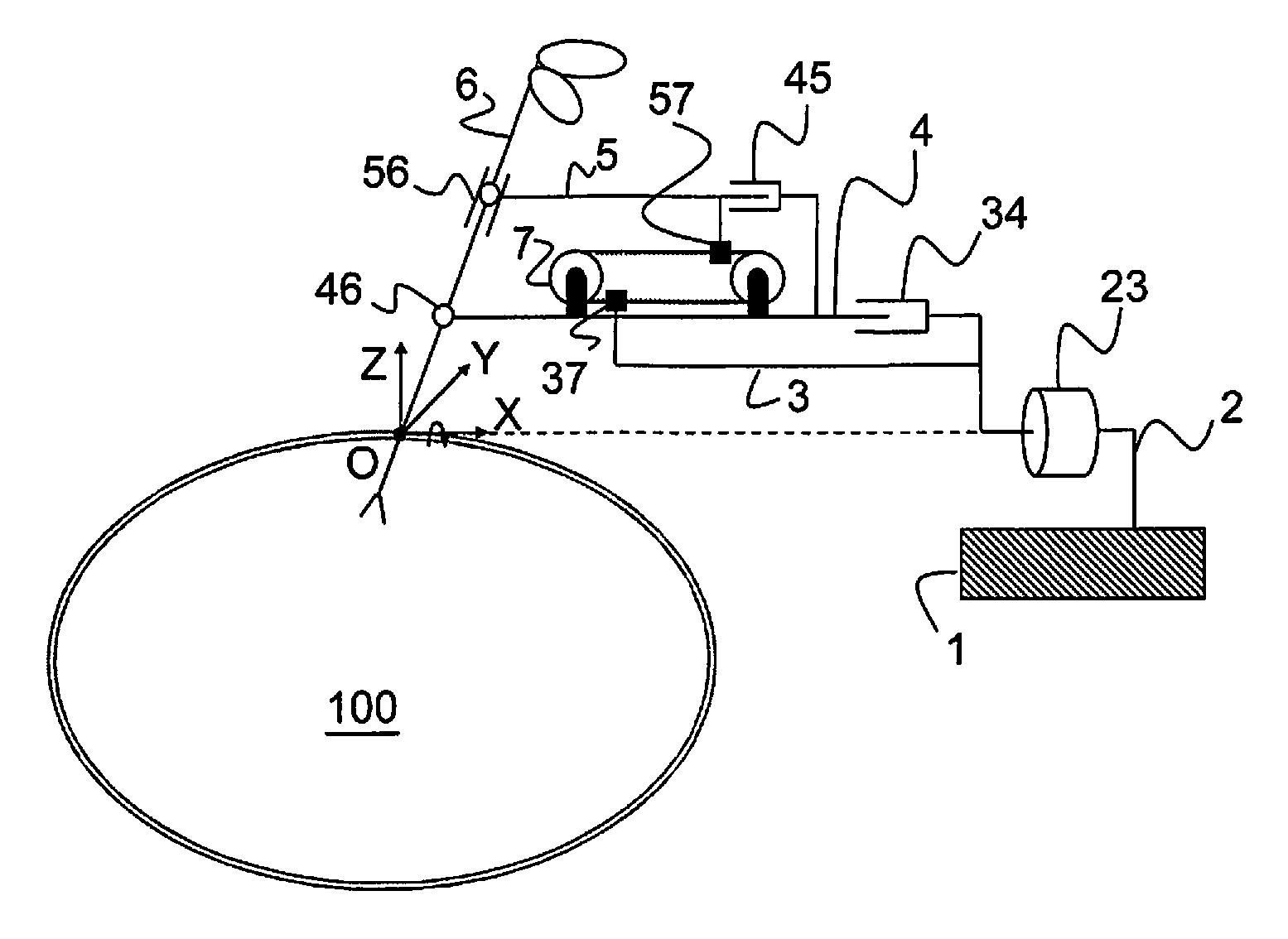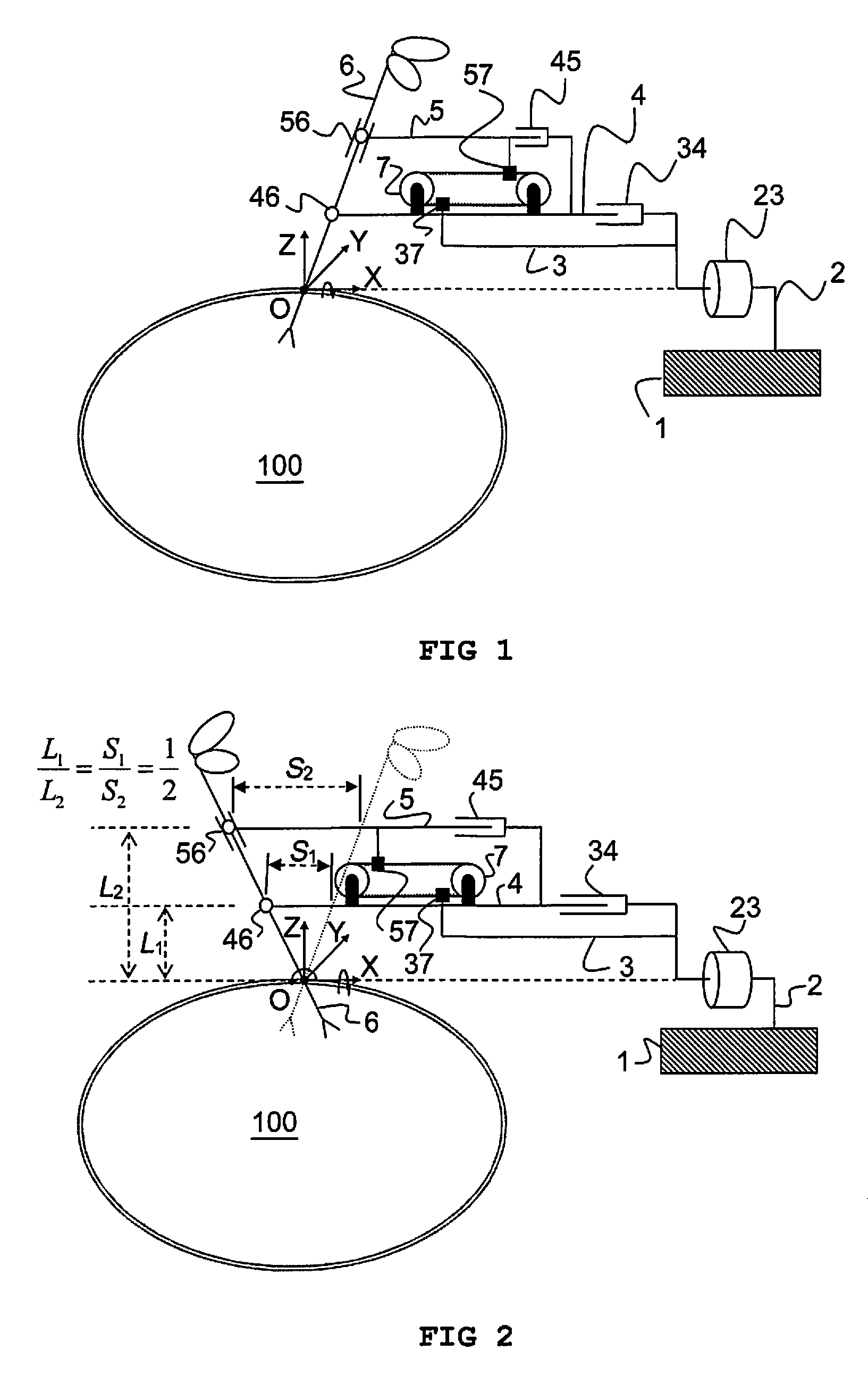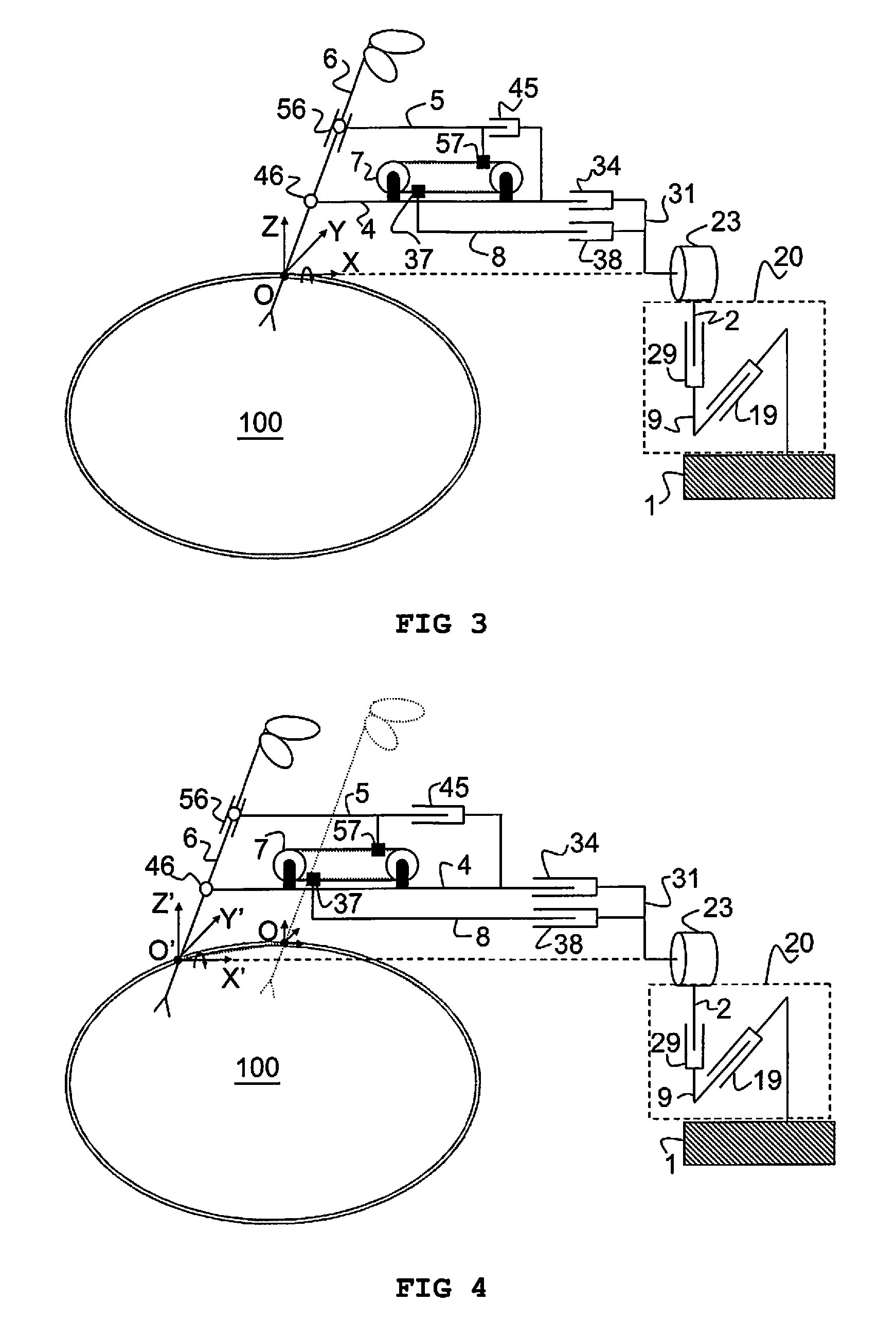Remote centre of motion positioner
a positioner and remote technology, applied in the field of robotics, can solve the problems of reducing vision perception from 3 dimensions to 2 dimensions, different and more difficult comparison of mis techniques, and reducing the effect of rigidity
- Summary
- Abstract
- Description
- Claims
- Application Information
AI Technical Summary
Benefits of technology
Problems solved by technology
Method used
Image
Examples
Embodiment Construction
Definitions
A “revolute joint” is a one degree of freedom kinematic pair which provides single axis rotation function.
A “prismatic joint” is a one degree of freedom kinematic pair which provides single axis linear motion capability.
“Movement axis of prismatic joint” is the line which coincides with the occurred motion of the kinematic pair of the prismatic joint
A “slide-revolute joint” is a two degrees of freedom joint which provides one degree of freedom rotation function along an axis of linear motion (one degree of freedom translation).
A “rigid link or link” is a solid object which connects with another rigid link via related joints to obtain relative motion.
A “belt clamp” is a physical fixation between the related link to the belt.
[0051]In a broad aspect an apparatus is provided for holding and manipulating an instrument about a predetermined remote centre of motion (rotation), which remains fixed during a given time period.
[0052]An exemplifying embodiment of an apparatus accordi...
PUM
 Login to View More
Login to View More Abstract
Description
Claims
Application Information
 Login to View More
Login to View More - R&D
- Intellectual Property
- Life Sciences
- Materials
- Tech Scout
- Unparalleled Data Quality
- Higher Quality Content
- 60% Fewer Hallucinations
Browse by: Latest US Patents, China's latest patents, Technical Efficacy Thesaurus, Application Domain, Technology Topic, Popular Technical Reports.
© 2025 PatSnap. All rights reserved.Legal|Privacy policy|Modern Slavery Act Transparency Statement|Sitemap|About US| Contact US: help@patsnap.com



